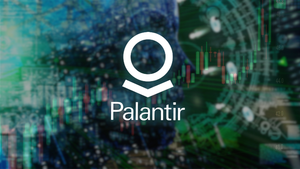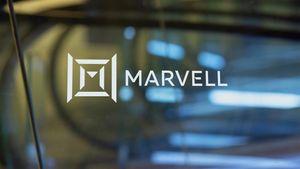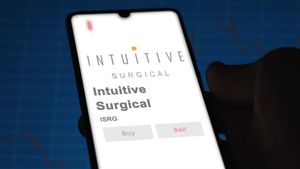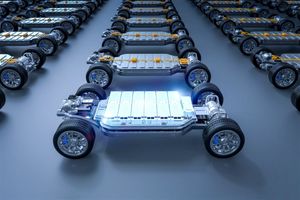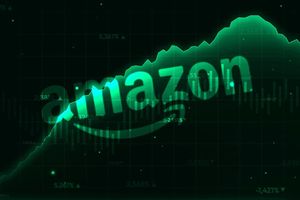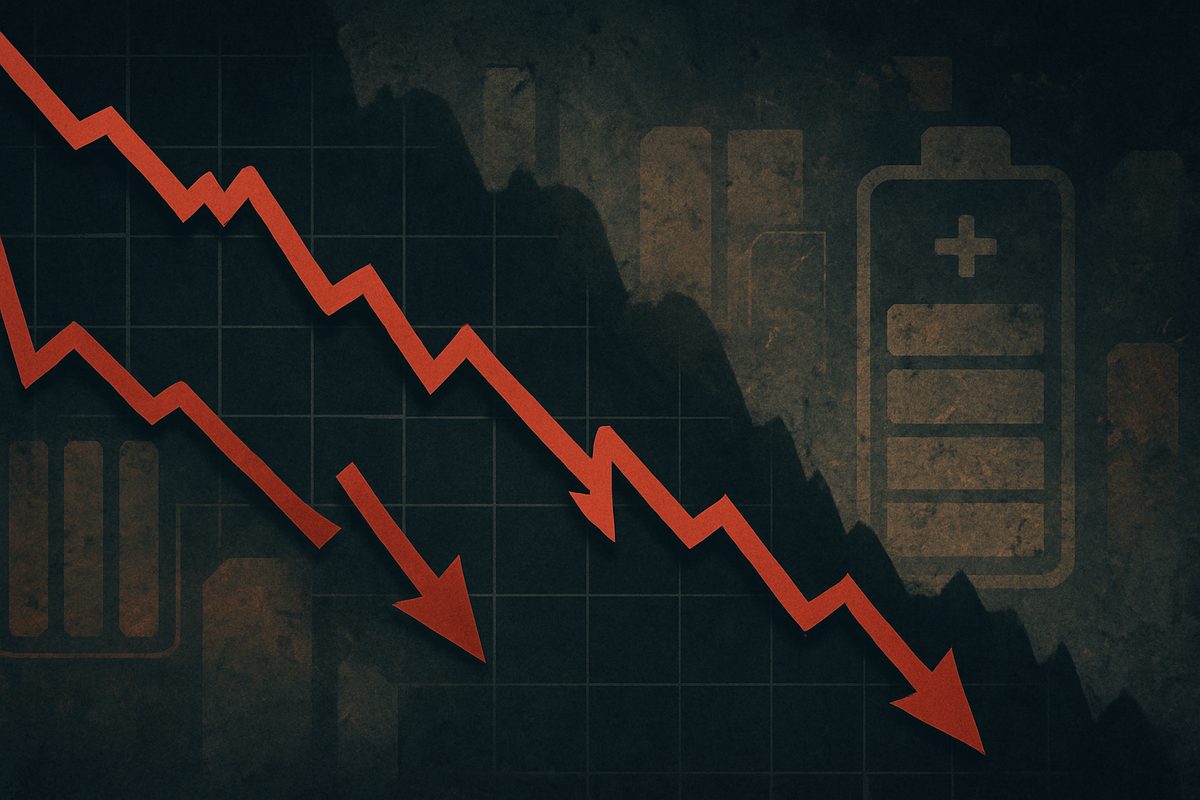
Lotte Energy Materials (KRX:020150), a critical supplier of copper foil for electric vehicle (EV) batteries, has once again found itself in turbulent waters, with its stock plummeting by a further 5.8% this past week. This latest drop extends a brutal period for shareholders, as the company's stock has now shed a staggering 58% of its value over the last three years. The continued decline comes on the heels of recent earnings reports that underscore persistent operational struggles and declining profitability, signaling deep-seated challenges within the company and the broader EV supply chain.
The immediate implications of this sustained weakness are stark. Investors are reacting with palpable negativity, reflected not only in the dramatic stock depreciation but also in market sentiment indicators. The company's inability to consistently generate profits, coupled with a significant revenue miss in its most recent quarter, points to ongoing financial strain. As the EV market navigates a period of what some analysts term a "chasm" in demand, Lotte Energy Materials finds itself at the forefront of the industry's growing pains, forced to adapt its expansion plans and strategize for a recovery that appears increasingly distant for some.
Detailed Coverage: A Quarter of Misses and Prolonged Market Discontent
The recent financial disclosures from Lotte Energy Materials paint a challenging picture. For the second quarter of 2025, the company reported consolidated revenue of KRW 204.9 billion, falling short of analyst estimates. More critically, it registered an operating loss of KRW 31.1 billion. While this represents a narrowing of the KRW 46 billion operating loss from the first quarter of 2025—a slight improvement attributed to increased sales volume from key customers and better utilization rates—it nonetheless signals continued operational struggles. The Earnings Per Share (EPS) for the quarter stood at -136.05 KRW, marginally missing analyst projections, with a net income of -48.24 billion KRW. These figures underscore the difficulties faced by the company in a volatile market.
The timeline of Lotte Energy Materials' stock performance reflects a prolonged period of investor apprehension. Over the past three years, shareholders have endured a significant erosion of value, with the stock plummeting by approximately 58%. This downward trend has continued unabated, with a decline of around 37.84% to 46.53% over the last year, and a further drop of 13% to 14.29% in just the past month. As of September 26, 2025, the stock was trading at KRW 23,100, a stark contrast to its 52-week high of KRW 43,400. This sustained depreciation highlights a clear lack of confidence from the market, exacerbated by the recent earnings report.
Key players involved in this unfolding narrative include Lotte Energy Materials (KRX:020150) itself, its parent company Lotte Chemical (KRX:011170), and CEO Kim Yeon-Seop, who has publicly committed to securing profitability in the latter half of 2025 through innovation and market leadership in high-end copper foil. The company's customers, primarily EV battery manufacturers and original equipment manufacturers (OEMs), are also significant stakeholders, as their inventory adjustments and demand fluctuations directly impact Lotte Energy Materials' sales volumes. Initial market reactions to the Q2 2025 report have been largely negative, reinforcing the stock's "Sucker Stock" classification by some financial analytics platforms. Despite this, analyst sentiment remains mixed, with an average 12-month price target suggesting potential upside, though this is tempered by a consensus EPS forecast of -KRW 1,625 for the next financial year.
Shifting Fortunes: Winners and Losers in a Challenging Market
The struggles of Lotte Energy Materials (KRX:020150) are not isolated but rather indicative of broader headwinds facing the entire EV battery copper foil industry. While Lotte Energy Materials and its shareholders are undoubtedly among the primary losers, the market dynamics create a complex interplay of challenges and potential opportunities for other players.
Direct competitors, such as South Korea's SK Nexilis (KRX:263750) and Solus Advanced Materials (KRX:336370), along with Japanese giants like Furukawa Electric Co., Ltd. (TYO:5801) and Chinese manufacturers such as NUODE and Jiujiang Defu, are all navigating this challenging environment. The industry-wide slowdown in EV demand has led to reduced profitability and a general deceleration of investment across the board. SK Nexilis, for instance, has also faced financial strain and reduced capital expenditures, demonstrating that the market pressures are widespread. The overcapacity in lithium battery copper foil production, driven by rapid expansion in previous years, has intensified competition, leading to price wars and squeezed profit margins for all participants.
However, Lotte Energy Materials' difficulties could, in the long term, create certain advantages for competitors with stronger financial positions, more diversified customer bases, or strategic geographical advantages. Companies like Solus Advanced Materials, which is actively establishing production facilities in North America to capitalize on incentives like the US Inflation Reduction Act (IRA), might be better positioned to absorb market share, particularly as Lotte Energy Materials has postponed its own major expansion projects in Spain and is flexibly adjusting North American plans. Chinese manufacturers, already dominant in the cost-effective LFP battery market, could further solidify their position if Lotte's struggles persist, especially as Lotte Energy Materials itself is looking to diversify its customer base to include Chinese players.
Furthermore, companies focused on next-generation technologies or successful diversification beyond traditional EV copper foil might find new avenues for growth. If Lotte's financial woes impede its ability to rapidly commercialize high-value products like nickel-plated copper foil for solid-state batteries or materials for AI accelerators, other innovators in these niche areas could gain a competitive edge. The broader trend of decreasing copper usage per vehicle due to thinner foils and alternative materials also means that companies adept at efficiency and innovation, or those expanding into energy storage systems (ESS) and hybrid vehicles, could emerge stronger from this period of market consolidation and adjustment.
Wider Significance: A Bellwether for the EV Battery Supply Chain
Lotte Energy Materials' (KRX:020150) continued struggles are not an isolated event but rather a significant indicator of broader, systemic challenges gripping the entire electric vehicle (EV) battery and materials sector. The company's persistent operating losses, including KRW 46 billion in Q1 2025 and KRW 31.1 billion in Q2 2025, are directly tied to increased demand volatility, customer inventory adjustments, and a global oversupply of battery materials. This situation reflects a period of recalibration for an industry that experienced explosive growth and overly optimistic forecasts, now facing underutilized manufacturing capacity and diminishing returns on investment. While the long-term outlook for EV adoption and battery demand remains robust, the short-term "demand dip" is creating intense price competition and significant pressure on profitability for all players, including those in the critical copper foil segment.
The ripple effects of this downturn are palpable across the EV supply chain. Competitors such as SK Nexilis (KRX:263750) and Solus Advanced Materials (KRX:336370) are also experiencing reduced factory operating rates, underscoring the industry-wide nature of these challenges. The narrow technological gap and overlapping customer bases among copper foil manufacturers mean that the difficulties of one major player quickly translate into systemic weaknesses affecting others. This environment is compelling companies to aggressively pursue customer diversification and strategically expand into overseas markets, particularly North America and Europe, to mitigate risks and secure future growth. For battery manufacturers and automotive OEMs, the slowdown in EV sales growth necessitates production adjustments and a push for greater supply chain localization, driven by national policies. Lotte Energy Materials, for instance, is actively engaging with North American OEMs and new customers in Europe and China, including reportedly the world's largest battery manufacturer, CATL (SHE:300750), to shore up its sales pipeline.
A pivotal force shaping these dynamics is the US Inflation Reduction Act (IRA), enacted in 2022. This legislation is fundamentally reorienting the EV battery supply chain by offering substantial consumer tax credits for EVs that meet stringent requirements for critical mineral sourcing and battery component manufacturing within the U.S. or its Free Trade Agreement partners. For Lotte Energy Materials and its peers, the IRA presents both opportunities and formidable challenges. While it incentivizes domestic production and offers production tax credits, it also introduces complexities related to higher U.S. manufacturing costs and the need for meticulously traceable, compliant supply chains. The IRA is unequivocally driving a geographical reshuffling of the global battery supply chain, pushing for increased localization and reducing reliance on traditional manufacturing hubs, predominantly China.
Historically, the current predicament in the EV battery and materials market bears striking resemblances to the consolidation phase witnessed in the solar power industry during the 2000s and 2010s. That period was characterized by rapid growth, aggressive capacity expansions (especially by Chinese manufacturers), subsequent oversupply, and a dramatic collapse in solar panel prices. This led to widespread profitability struggles, bankruptcies, and a significant shakeout of less competitive firms. Key similarities include initial periods of explosive growth driven by technological promise and government support, followed by over-investment, oversupply, price erosion, and ultimately, policy interventions (like the IRA) aimed at fostering domestic production. These historical parallels suggest that the EV battery materials sector may be entering a similar period of rationalization, where only the most technologically advanced, cost-competitive, and strategically agile players, compliant with evolving regional policies, will ultimately thrive.
What Comes Next: Strategic Pivots and the Path to Recovery
Lotte Energy Materials (KRX:020150) is embarking on a multi-pronged strategy to navigate the current market headwinds and return to profitability, with a clear focus on both short-term stabilization and long-term growth. The immediate goal is to achieve a turnaround in the second half of 2025, driven by technological and marketing innovation, increased sales volume from key customers, and improved plant utilization rates. Proactive inventory reduction and the depletion of customer copper foil inventories are anticipated to gradually improve operating rates and profitability. The company is also looking to diversify its product applications into Energy Storage Systems (ESS), mobile devices, and IT to create more stable revenue streams.
In the long term, Lotte Energy Materials aims to solidify its leadership in the high-end copper foil market, targeting a 30% market share by 2028 with an annual production capacity of 240,000 tons. This ambition is supported by significant global expansion plans, though some have faced adjustments. The completion of its high-end copper foil plant in Spain, initially targeted for 2025, has been postponed to June 2027 due to the slowdown in the European EV market. Conversely, the Malaysian plant is ramping up, with Plants 5 and 6 reaching full-scale mass production in the second half of 2024, significantly boosting overall capacity. Critically, high-end copper foil production for EVs is slated to begin at the Malaysian plant in 2026 to meet growing customer demand.
Strategic pivots also include a strong emphasis on next-generation battery materials and new market segments. The company launched "HiSTEP" in Q2 2025, Korea's first hybrid high-end copper foil brand, targeting various battery applications. Furthermore, Lotte Energy Materials is making inroads into the rapidly growing market for high-spec copper foil used in AI accelerators, with its HVLP4 product already in initial supply to a North American customer and HVLP5 expected to be accepted within 2025. Development of materials for high-silicon anode batteries (supply expected 2026), LFP cathode materials (pilot production Q1 2025), and sulfide-based solid electrolytes for all-solid-state batteries (mass production by 2027) positions the company to capitalize on future battery technology trends.
However, the path ahead is fraught with challenges. Continued volatility in the EV market, particularly in North America and Europe, poses a significant risk to utilization rates and investment timelines. Intense competition from both established rivals like Solus Advanced Materials (KRX:336370) and SK Nexilis (KRX:263750), as well as cost-effective Chinese manufacturers, will likely maintain pressure on pricing and market share. Rising raw material costs (like copper), increased electricity prices, and global logistics expenses could further erode profitability. The company's ability to successfully navigate these external pressures while executing its ambitious internal strategies will determine its trajectory, with potential scenarios ranging from a strong recovery driven by high-value products and diversified markets to prolonged stagnation if EV demand remains subdued and competition intensifies. The company's stable financial structure, characterized by a low debt ratio, provides a crucial buffer to support these strategic investments and flexible responses to an unpredictable market.
Wrap-up: A Critical Juncture for Lotte Energy Materials
Lotte Energy Materials (KRX:020150) finds itself at a critical juncture, grappling with the profound impact of a decelerating EV market and an oversupply of battery materials. The persistent operating losses and a dramatic 58% stock depreciation over the past three years underscore the severe challenges the company faces. This situation serves as a stark reminder of the inherent risks in rapidly evolving technology markets, where periods of explosive growth can quickly give way to consolidation and intense competition. The short-term outlook remains cautious, with the company betting on a recovery in the latter half of 2025, contingent on increased sales, improved utilization, and successful inventory management.
Moving forward, the market will closely assess the efficacy of Lotte Energy Materials' strategic pivots. The successful ramp-up of its Malaysian plants, the timely commencement of high-end EV copper foil production in 2026, and the execution of its 'HiSTEP' and AI accelerator copper foil initiatives will be crucial indicators of its ability to capture higher-value segments. The delayed Spanish plant project, however, highlights the need for flexibility in capital expenditure in response to dynamic regional market conditions. The broader EV battery supply chain will continue to be shaped by global policies like the US IRA, pushing for localization and reshaping competitive landscapes, offering both opportunities for compliant players and hurdles for those reliant on traditional supply routes.
Investors should closely monitor several key factors in the coming months: Lotte Energy Materials' Q3 2025 earnings report for signs of the anticipated H2 recovery, global EV sales data to gauge market demand, and progress on its new product lines and plant expansions. The company's financial stability, despite its operational losses, provides some resilience, but sustained profitability will ultimately hinge on its ability to innovate, diversify its customer base, and adapt swiftly to the evolving demands and regulatory frameworks of the global EV and battery materials market. The current period is not merely a slump but a transformative phase that will redefine leaders and laggards in this vital industrial sector.
This content is intended for informational purposes only and is not financial advice
